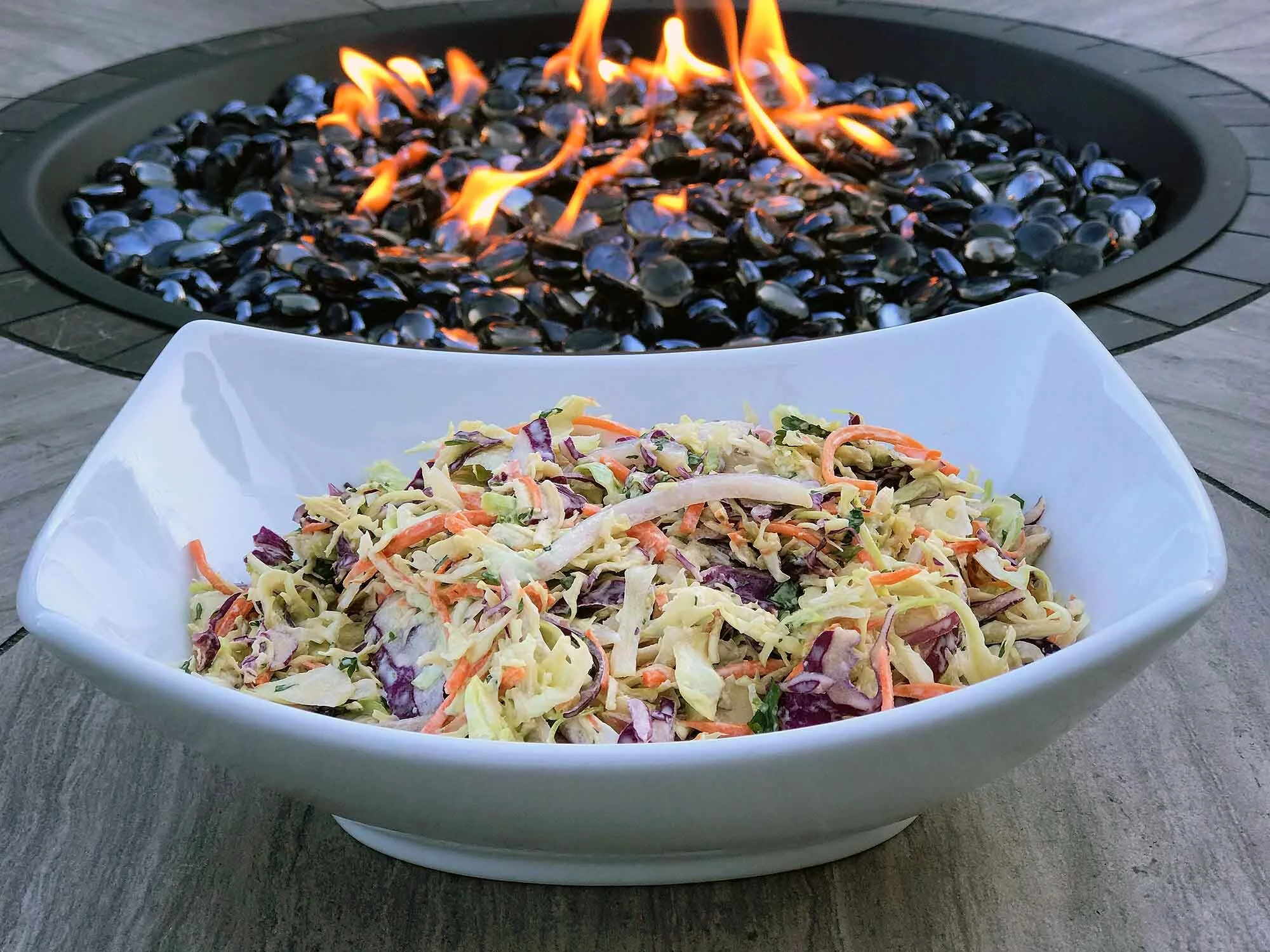Now that summer is in full swing, cool crisp coleslaw is on the menu, and it’s the perfect balance to a hearty barbecue!
I often find traditional coleslaw too sweet, too sour, or too soggy, so I’ve given this a lighter Asian twist. It got rave reviews in my recent Spring Clean Your Body course, so I had to share it with you, just in time for the 4th of July.
This salad is teaming with color, flavor, and phytonutrients. Ginger and garlic pair perfectly with green and purple cabbage, carrot, red onion, and cilantro. Instead of vinegar, lime juice and zest are blended with tamari (unrefined soy sauce) and mayonnaise to lift this slaw to whole new level of yum! If you’re in a rush, just grab a bagged coleslaw mix at the grocers and dress it up with these anti-inflammatory ingredients.
Cabbage may have a reputation as peasant food, but it boasts some serious nutritional benefits for a humble bunch of leaves! In fact, cabbage has sustained humans through treacherous winters because it can be stored or fermented into sauerkraut in Northern Europe, or Kim Chee in Korea.
KEY NUTRIENTS AND PHYTONUTRIENTS:
Cabbage is a member of the Brassica family of cruciferous vegetables, which includes broccoli, cauliflower, watercress, arugula, kale, collards, turnip, and mustard greens.
Cruciferous veggies are prized for their unique class of phytonutrients, called glucosinolates (like sulforaphane and indole-3 carbinol). These compounds enhance detoxification of estrogen and a range of environmental toxins, activate key antioxidant systems, and have been associated with reduced risk of several types of cancer (breast, prostate, colon, and lung). Even the American Cancer Society has urged us to include regular intake of cruciferous vegetables to reduce our risk of cancer.
Colorful varieties of cabbage have greater nutrient density and different flavor profiles. Purple or red cabbage contains more anthocyanins, a purple flavonoid that benefits the eyes stabilizes blood vessel walls and enhances vitamin C and collagen levels. Savoy, Napa, and green cabbage tend to have higher levels of chlorophyll and sulfur compounds.
Cabbage is rich in vitamin C, glutamine, and fiber. In fact, that fiber also helps to bind and reduce cholesterol levels in much the same way as the lipid-lowering drug, cholestyramine. Limit serving sizes to 1/2 -1 cup to minimize bloating from the fermentable fibers in cabbage.
Research from the 1950s demonstrated that cabbage juice, rich in glutamine, helps speed the healing of stomach ulcers. More recent research shows that it can help regulate levels of Helicobacter pylori, the bacteria that lives in and contributes to the development of ulcers. Glutamine also helps to repair and maintain gut barrier function.
Cabbage Recipes
Fresh Rainbow Kimchee
This fresh, California-style kimchi is more like sauerkraut than traditional Korean kimchi.
Asian Rainbow Slaw
Liven up your slaw this summer with a colorful Asian twist!
COOKING NOTES
Savoy cabbage, with its lacier leaves, lends itself well to braising. Napa cabbage is perfect for salads or fermenting into sauerkraut and kimchee. (Get my Kim Chee recipe here). Be sure to cook cabbage lightly (5-7 minutes) as important enzymes (myrosinase) begin to diminish when overcooked.



